Jordanian C-130 Airdropped Supplies To Gaza Hospital
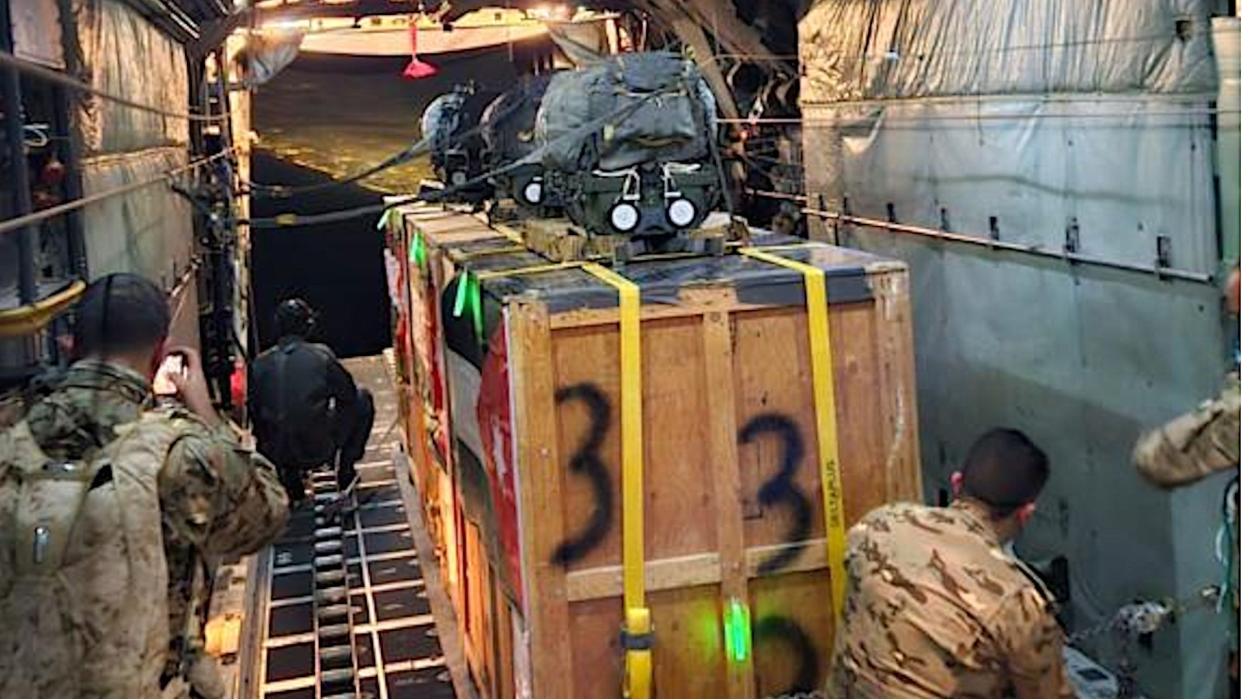
- Oops!Something went wrong.Please try again later.
The armed forces of Jordan airdropped medical supplies and food to a field hospital the country operates in the war-torn Gaza Strip overnight. Jordanian personnel used what look to be U.S.-made Joint Precision Airdrop System (JPADS) GPS-assisted parachute kits, which would have helped ensure the critical cargo got to the right place on the ground and allowed the crew dropping it to stay further away from threats on the ground.
The airdrop took place at midnight local time, according to the Jordanian armed forces. The government of Jordan has operated the field hospital in Gaza City, which Israeli forces say they have now surrounded, since 2009. The aerial resupply operation was coordinated with the Israel Defense Forces (IDF), according to Al Jazeera.
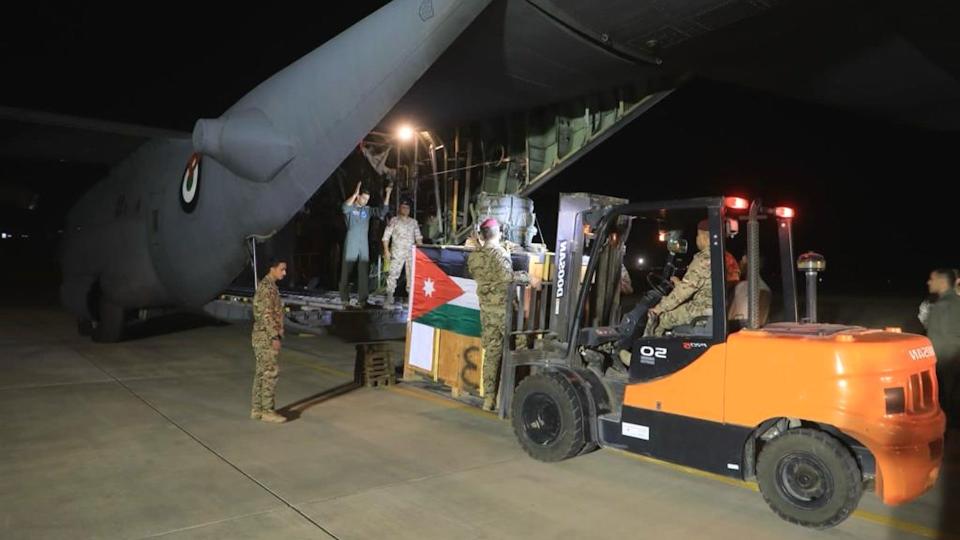
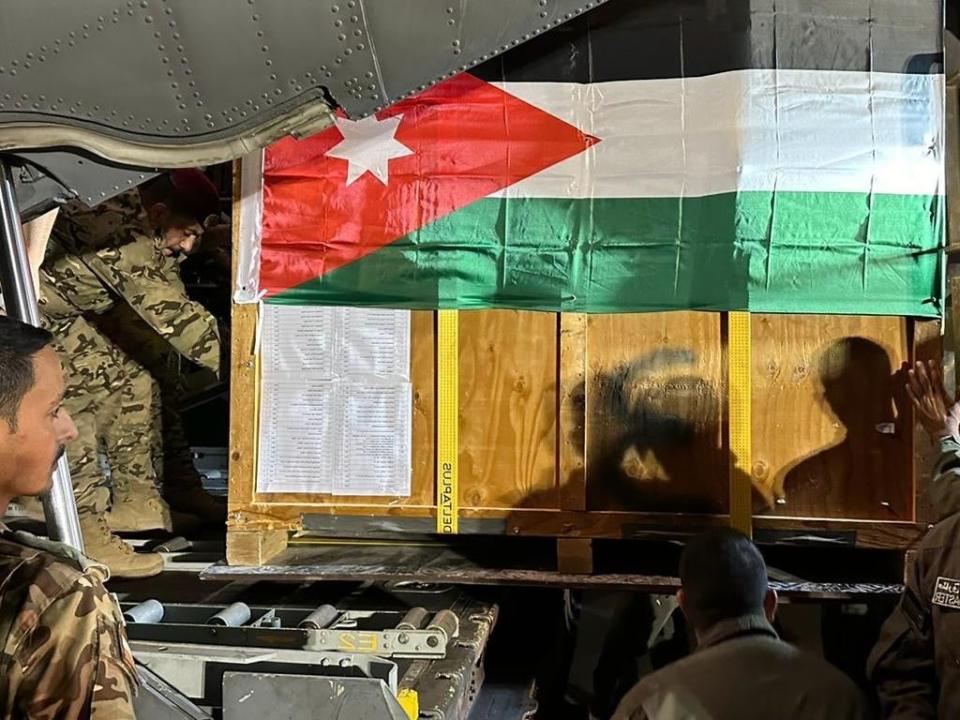
"This is our duty to aid our brothers and sisters injured in the war on Gaza," Jordan's Abdullah II wrote on X, formerly Twitter. "We will always be there for our Palestinian brethren."
https://twitter.com/KingAbdullahII/status/1721301905731633533
The Jordanian King's post was accompanied by a number of pictures from the operation. The Jordanian armed forces released additional imagery. At least three pallets of cargo rigged for airdrop can be seen loaded inside a Jordanian Air Force C-130 Hercules airlifter in the images.
The pictures also show the individual palletized loads fitted with at appear to be JPADS kits. We have reached out to the Jordanian military for more information.
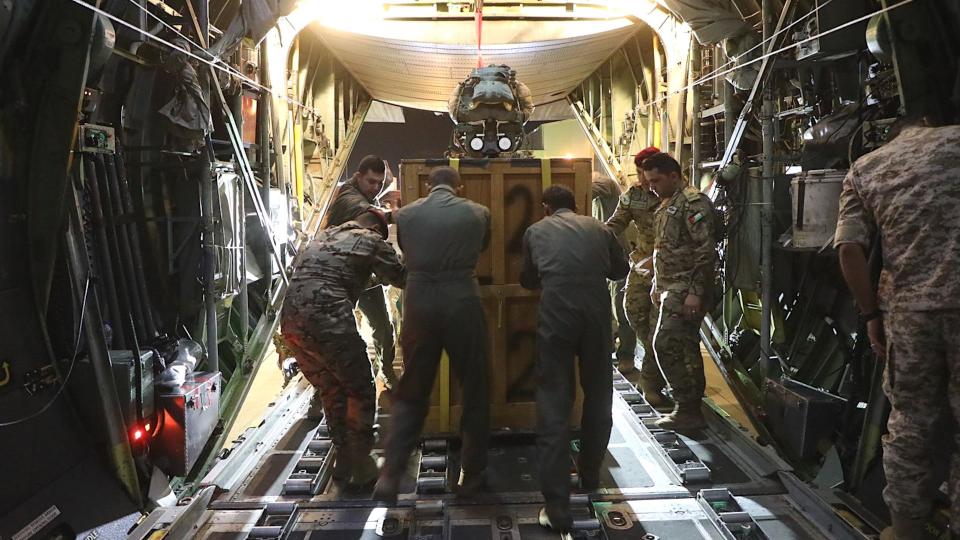
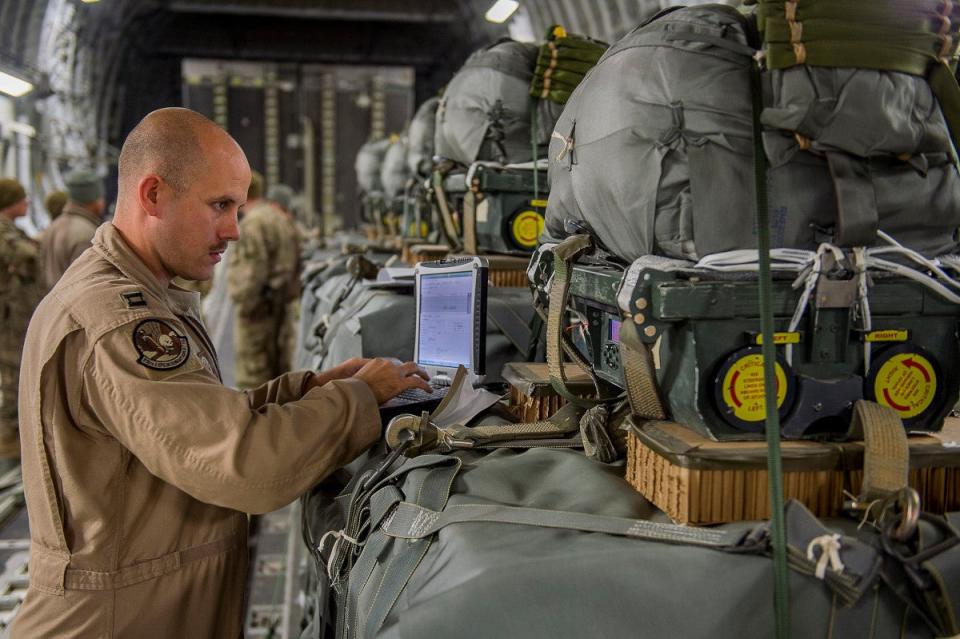
However, using JPADS, or a similar precision airdrop system, would make good sense in this context. Airdrop operations can be notoriously complex under the best of conditions and getting the cargo anywhere near the intended drop zone can be particularly challenging. Airdrops landing in the wrong spot and falling into the wrong hands is one of the longest-standing issues with aerial resupply. Loads straying far off course and ending up missing or damaged beyond use are other problems that have persisted over the years.
The U.S. military's development of the initial version of JPADS, which began in the 1990s, was specifically designed to address these and other related issues. The system combines steerable parachutes with a GPS-assisted navigation system into which the coordinates of the desired drop zone are inputted before a drop. There are four main versions, for use with cargo weighing up to 2,000, 10,000, 30,000, and 60,000 pounds, respectively. Derivatives for use with smaller payloads have also been developed, as can be seen in the video below.
https://www.youtube.com/watch?v=Q_CFv2MT7gM
JPADS' accuracy depends on a number of factors, including the altitude at which the airdrop bundle is released, how far the aircraft carrying it is from the intended drop zone, the total weight of the cargo, and environmental conditions. Broadly speaking, the core system, improvements to which have been made over the years, is reportedly routinely capable of getting the load within 50 to 75 meters (164 to 246 feet) of the programmed coordinates.
Airdrop bundles fitted with JPADS can be released from altitudes of up to 24,500 feet. With the help of the system, the cargo can glide along to drop zones, potentially up to 25 kilometers (around 15 and a half miles) away, depending on the release envelope and other factors, according to the U.S. Army. Those altitude and glide capabilities can also help keep airlifters further away from enemy defenses and potentially help reduce the chances of the drop, or its intended recipients, being detected.
In the context of the recent drop into Gaza, the precision offered by JPADS, or a similar system, would have helped Jordanian forces get the medical supplies and food to a secure drop zone as close as possible to the hospital. The facility is in a dense urban area, which means the bundles could have ended up on a roof or gotten their parachutes snagged on a building, leaving them inaccessible or damaged. The added precision would have also helped ensure militants, criminals, or other malign actors below did not get to the cargo first and abscond with it.
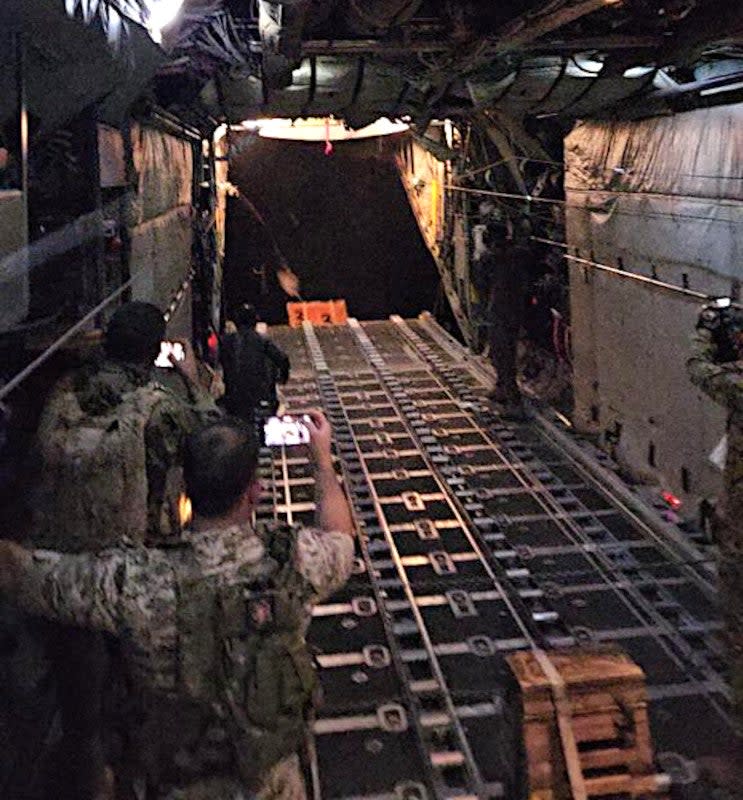
https://twitter.com/clashreport/status/1721552293974216762
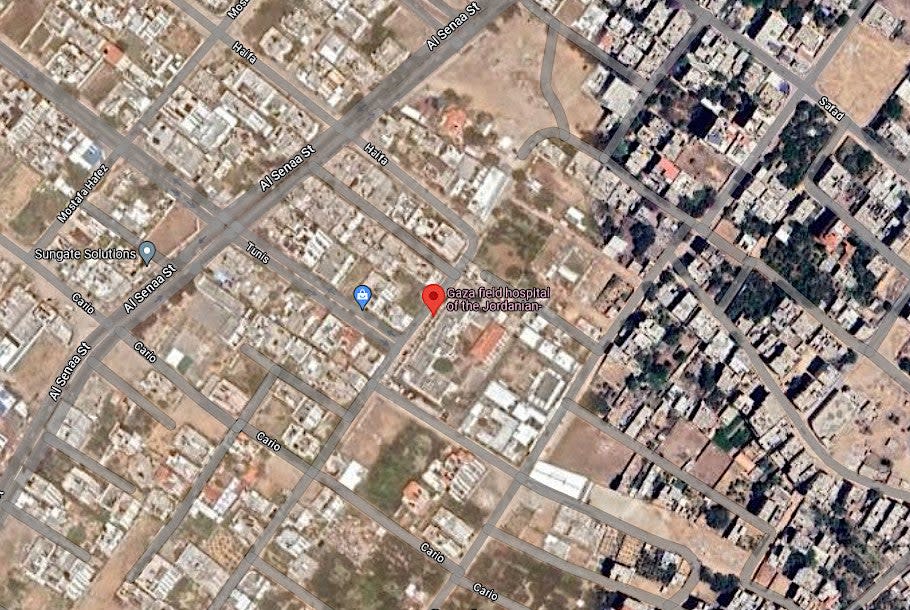
There could have been risks of taking enemy fire during this operation since Palestinian militants would have had no way of knowing this was a Jordanian rather than an Israeli C-130. Using a precision airdrop system would have allowed the Jordanian Air Force Hercules to release its payload potentially outside of the altitude envelope of shoulder-fired surface-to-air missiles, also known as man-portable air defense systems (MANPADS), while still achieving precision accuracy. This would have been impossible without a precision-guided airdrop system.
https://twitter.com/war_noir/status/1721185378122482041
The use of the precision airdrop also underscores the dire conditions civilians in Gaza have been contending with, especially when it comes to accessing medical care, in the ongoing conflict that erupted following unprecedented Palestinian terrorist attacks on Israel on October 7. There were unconfirmed reports that the Jordanian field hospital had to cease operations completely, at least for a period, back in October.
The IDF has acknowledged targeting areas around hospitals, as well as ambulances, but claims this is because Hamas and other Palestinian militants have been using them as cover for their activities. Palestinian terrorists maintain a large underground tunnel network across Gaza, portions of which are understood to run under hospitals, schools, and other municipal sites.
https://twitter.com/IDF/status/1718010359397634252
At the same time, attempts to get humanitarian aid in on the ground, particularly through the Rafah border crossing with Egypt, have been met with physical and political roadblocks. Convoys of humanitarian aid have been moving more steadily through the Rafah crossing more recently, while groups of ambulances have been bringing injured Gazans into Egypt.
All of this also comes as Jordan specifically finds itself in a very complicated geopolitical position. Jordan has a long-standing relationship with Palestinian authorities in the West Bank, where violence has also been steadily escalating in recent weeks. It also recognizes the state of Israel, unlike many other countries in the region, and has strong ties to the United States. The coordination of the airdrop last night with Israel underscores these complexities.
Part of Jordan's current predicament is also just a byproduct of being between Israel and many of its regional adversaries. Last month, for instance, images emerged showing what was said to be an Iranian-designed Quds-series land-attack cruise missile that crashed in Jordan after Houthi militants in Yemen fired it at a target in Israel. This all heightens the risks of Jordan, specifically, being drawn into a potential regional conflagration. Authorities there have already asked for added U.S. military assistance to help guard the country's airspace.
https://twitter.com/clashreport/status/1719433861581443569
At the same time, Jordan has been outspoken in its criticism of how Israeli authorities are carrying out the current conflict in Gaza. Just today, Jordanian Prime Minister Bisher al Khasawneh warned that "all options were on the table" for how his country might further respond to the crisis.
"Any attempt to expel Palestinians in an attempt by Israel to change geography and demography we will confront," Jordan's Foreign Minister Ayman Safadi also said last week. He added that any organized attempt to force Palestinians out of the West Bank en masse was a "red line" that would be seen as tantamount to a declaration of war, according to Reuters.
The midnight precision airdrop of essential medical supplies and food into Gaza certainly shows there is still room for cooperation between Israel and Jordan. It also underscores the potential dangers of continued escalation that spillover elsewhere in the region.
Contact the author: joe@thedrive.com

